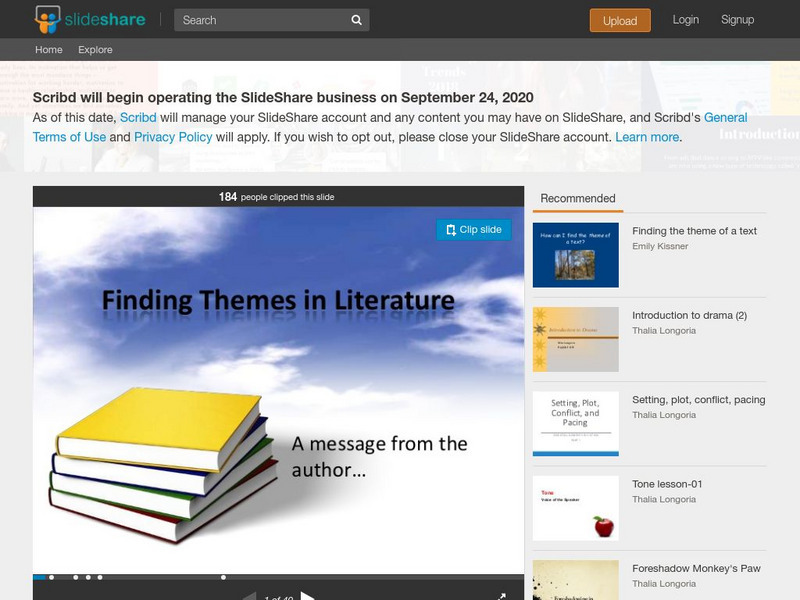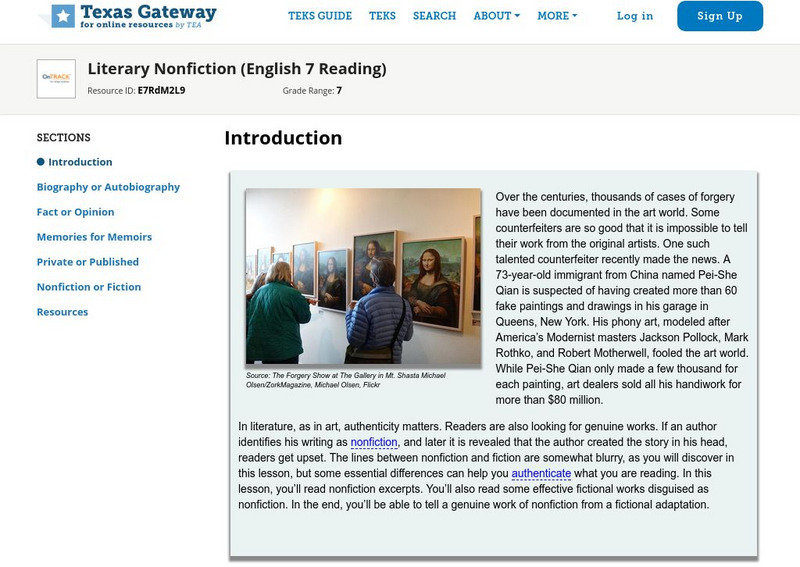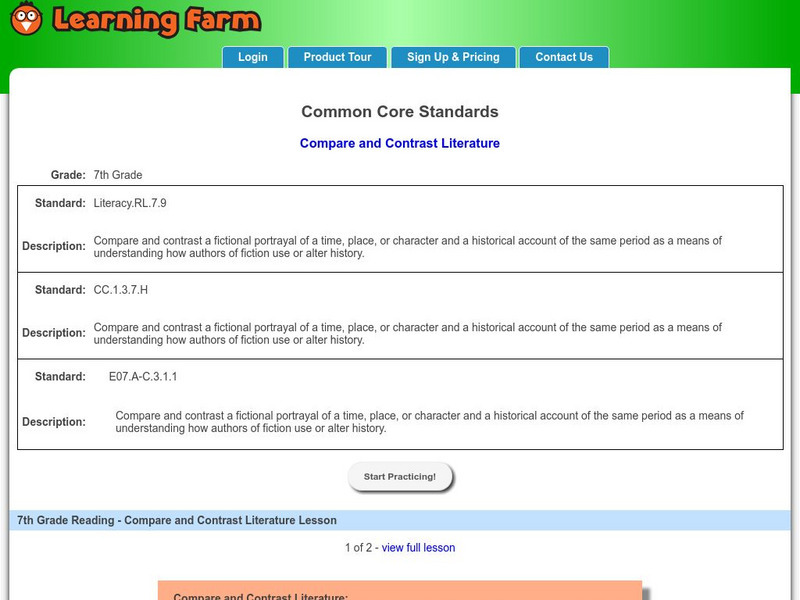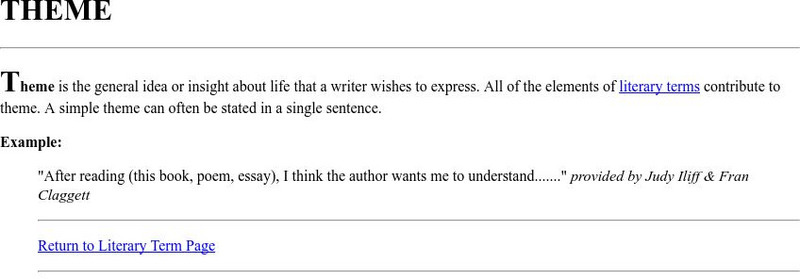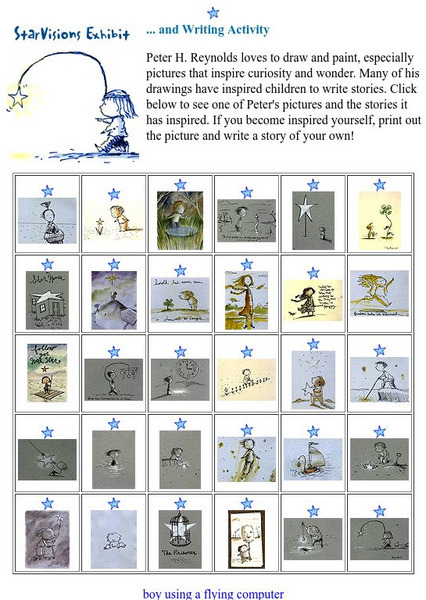Hi, what do you want to do?
Other
Lifestream Center: Lessons: Literary Concepts: Elements of a Story
This site offers a basic understanding of the elements of a story. It clearly defines each literary term.
Harold D. Underdown
Writing Young Adult and Children's Fiction and Fantasy
A great article concerning writing children's literature, especially in the area of fantasy or science fiction. The author provides information concerning how to develop characters, creating literary elements, and discusses some pitfalls...
Tom Richey
Slide Share: Finding Themes in Literature
A slide show with forty slides with explanations, examples, and information on how to determine the theme of a text. RL.9-10.2 and RL.11-12.2 Analyzing Theme.
Sophia Learning
Sophia: Comparing and Contrasting Texts
Two PowerPoint presentations and a video [2:57] on comparing and contrasting literary and informational texts as well as how to write a literary analysis. Includes links to external resources.
Sophia Learning
Sophia: Analyzing the Author
A slideshow with ten slides that discusses the difference between a subject and a theme and gives several examples of each found within a variety of popular classical and modern texts.
Annenberg Foundation
Annenberg Learner: Interactives: Literature: What Makes a Good Short Story?
This interactive exhibit takes learners on a literary journey through the classic short story.
Texas Education Agency
Texas Gateway: Literary Nonfiction
[Accessible by TX Educators. Free Registration/Login Required] Identify the literary language and devices used in memoirs and personal narratives and compare their characteristics with those of an autobiography.
Texas Education Agency
Texas Gateway: Literary Nonfiction (English 7 Reading)
[Accessible by TX Educators. Free Registration/Login Required] Learn how to describe the structural and substantive differences between an autobiography or diary and a fictional adaptation of it.
Learning Farm
Learning Farm: Compare and Contrast Literature
Students will learn how to compare and contrast passages from different time periods. Analyzing the similarities and differences of in the way authors show a historical time, place, or a character gives the reader a broader understanding...
Eserver
E Server: Short Fiction
A diverse group of writers, subjects, and eras is represented here. All references cited are often anthologized and studied in English classes.
CommonLit
Common Lit: Themes
This is a collection of Grade-Leveled texts (3-12) based on your choice of 26 different themes such as America, Beauty and Happiness, Community, Death, War, etc. [Free account registration required for specific tools.]
CommonLit
Common Lit: Book Pairings
Teaching a book unit this year? It's a best practice to supplement book units with short passages from a variety of different genres. These 92 reading passages were handpicked by master teachers to supplement your book units. They...
Alabama Learning Exchange
Alex: Using Fairy Tales to Teach the Short Stories
Familiar fairy tales are used as guides to help students analyze the elements of the short story: plot, theme, setting, point of view, and character.
British Library
British Library: 20th Century: Creative Activities
Channel your creativity with these writing activities.
Louisiana Department of Education
Louisiana Doe: Louisiana Believes: English Language Arts: Grade 6: The Witch of Blackbird Pond
Sixth graders will learn about the influence of family expectations and religious values on the development of one's personal identity. Students will also learn how reading informational texts in coordination with literary texts can...
Other
Goodreads.com: Fiction Book Lists
A list of popular adult and young adult fiction books broken down by category (Best Historical Fiction, Best Dystopian and Post-Apocalyptic Fiction, Best Epic Fantasy, etc.)
Ted Nellen
Cyber English (By Ted Nellen): Theme
This is a glossary entry for the term "Theme" including a definition and an example.
Harold D. Underdown
October 2005 Blog: Defining Historical Fiction
A good resource for understanding the genre of historical fiction, especially when applied to the characteristics of children's literature. From The Purple Crayon: a website devoted to children's literature.
Quia
Quia: Rags to Riches: Literary Elements: Setting, Plot, and Characters
In this game, students answer questions about the story elements of setting, plot, and characters
Other
Basic Literary Terms: The Novel and Short Story
This site has definitions of many parts of short stores including crisis, novel, short story, plot, exposition, theme, etc.
FableVision
Fable Vision: Peter Reynolds: The North Star: Writing Activity
Be inspired to write your own simple story or poem by choosing a picture from this collection of child-centered illustrations.
Other
Anthologies online.com: Understanding Theme and Premise
AnthologiesOnline.com provides this article Understanding Theme and Premise by Susan J. Letham, which provides tips on how to develop ideas for writing.
Quia
Quia: Narrative Structure Elements
This reading resource provides vocabulary words with definitions. All words are related to the elements of narratives. A link to associated review activities is included.
University of Victoria (Canada)
The U Vic Writer's Guide: Literary Term: Theme
This site provides a general description of theme, complete with a couple of examples.







